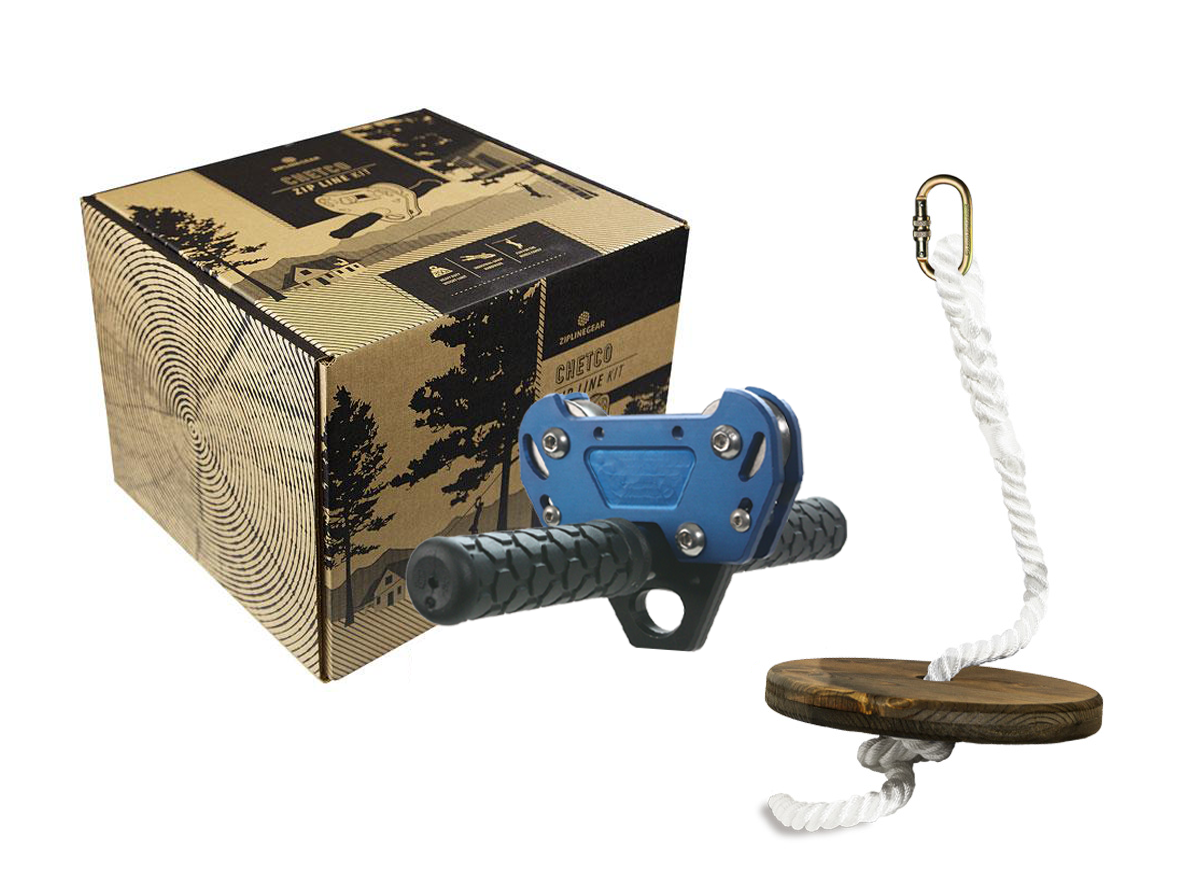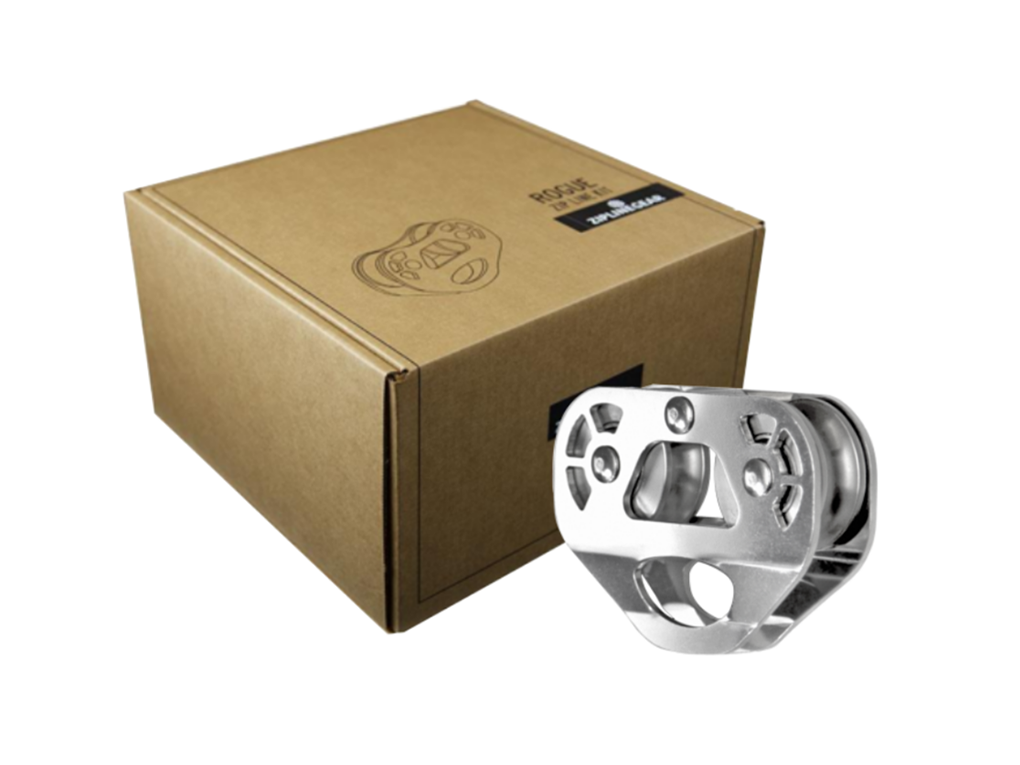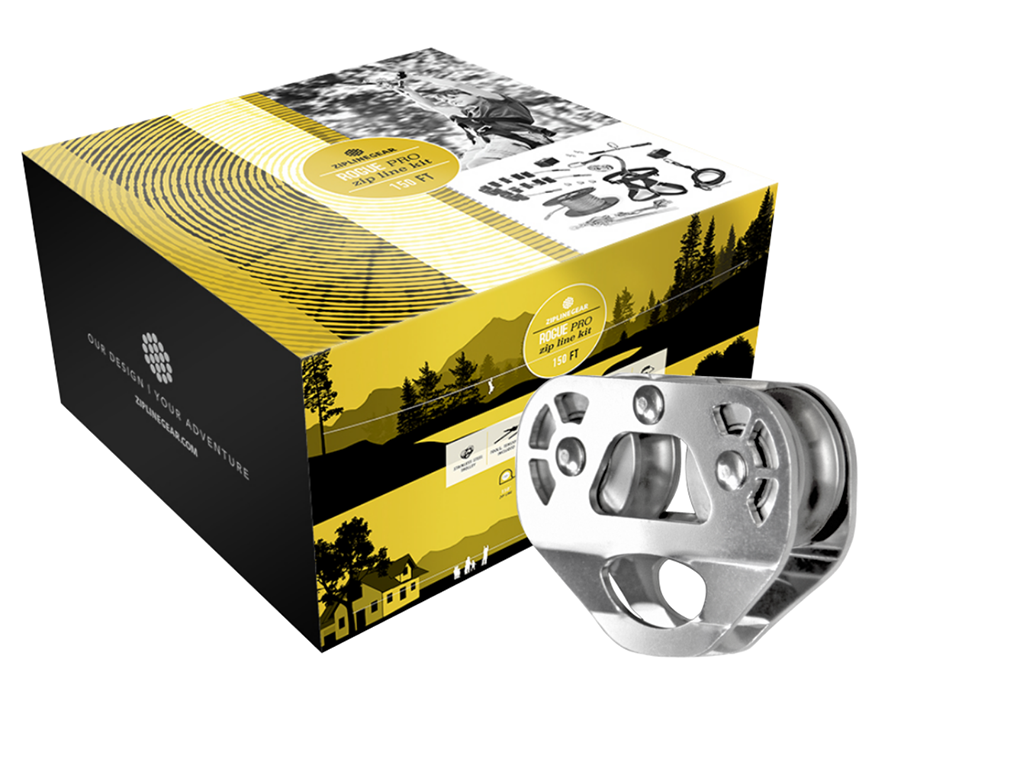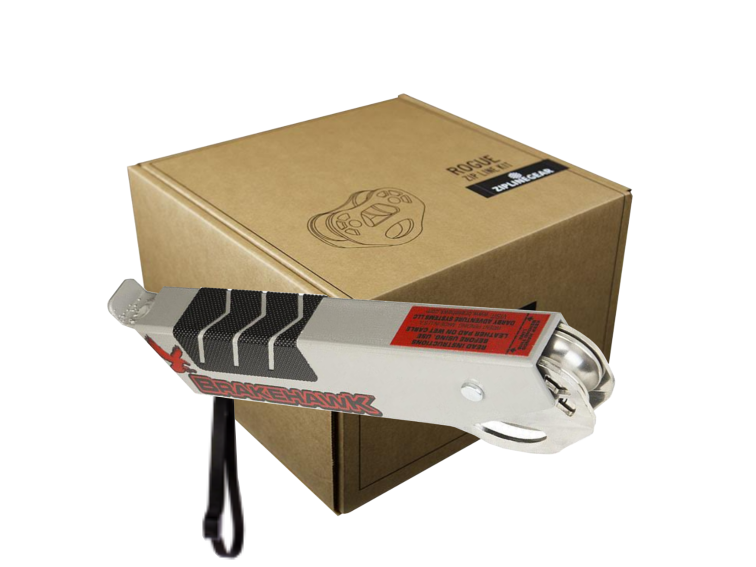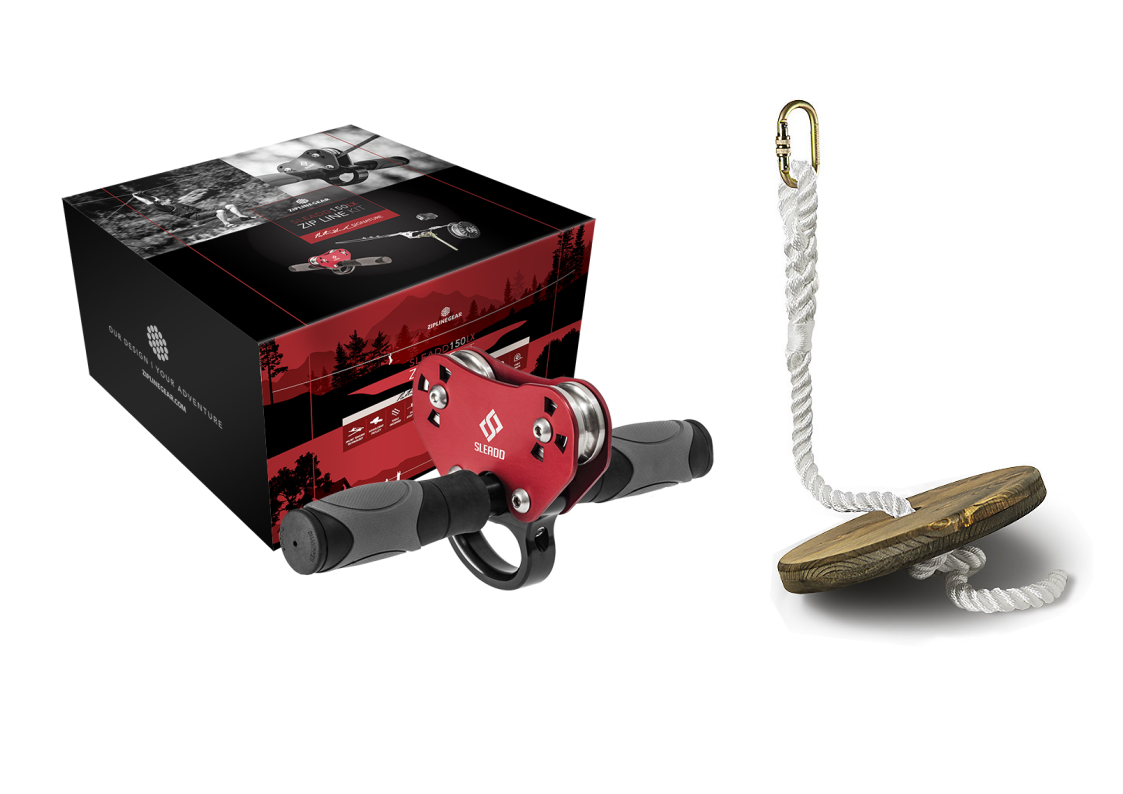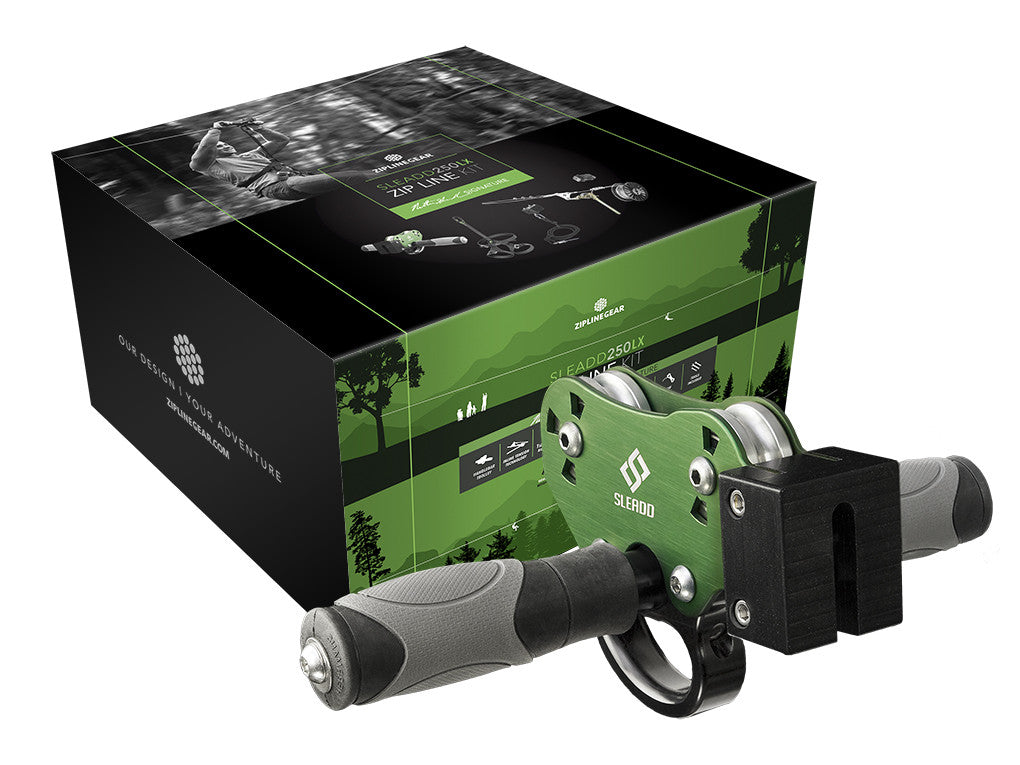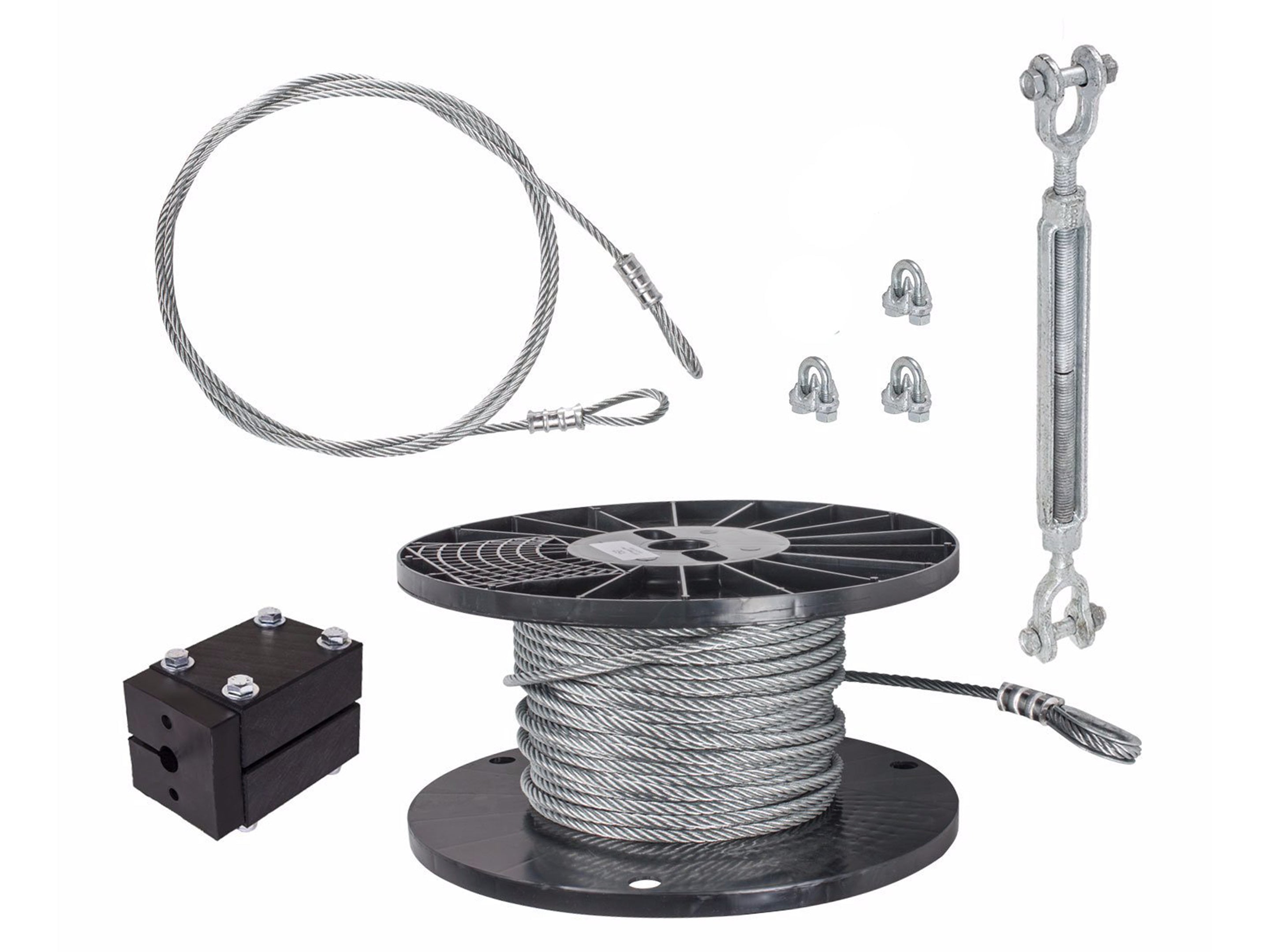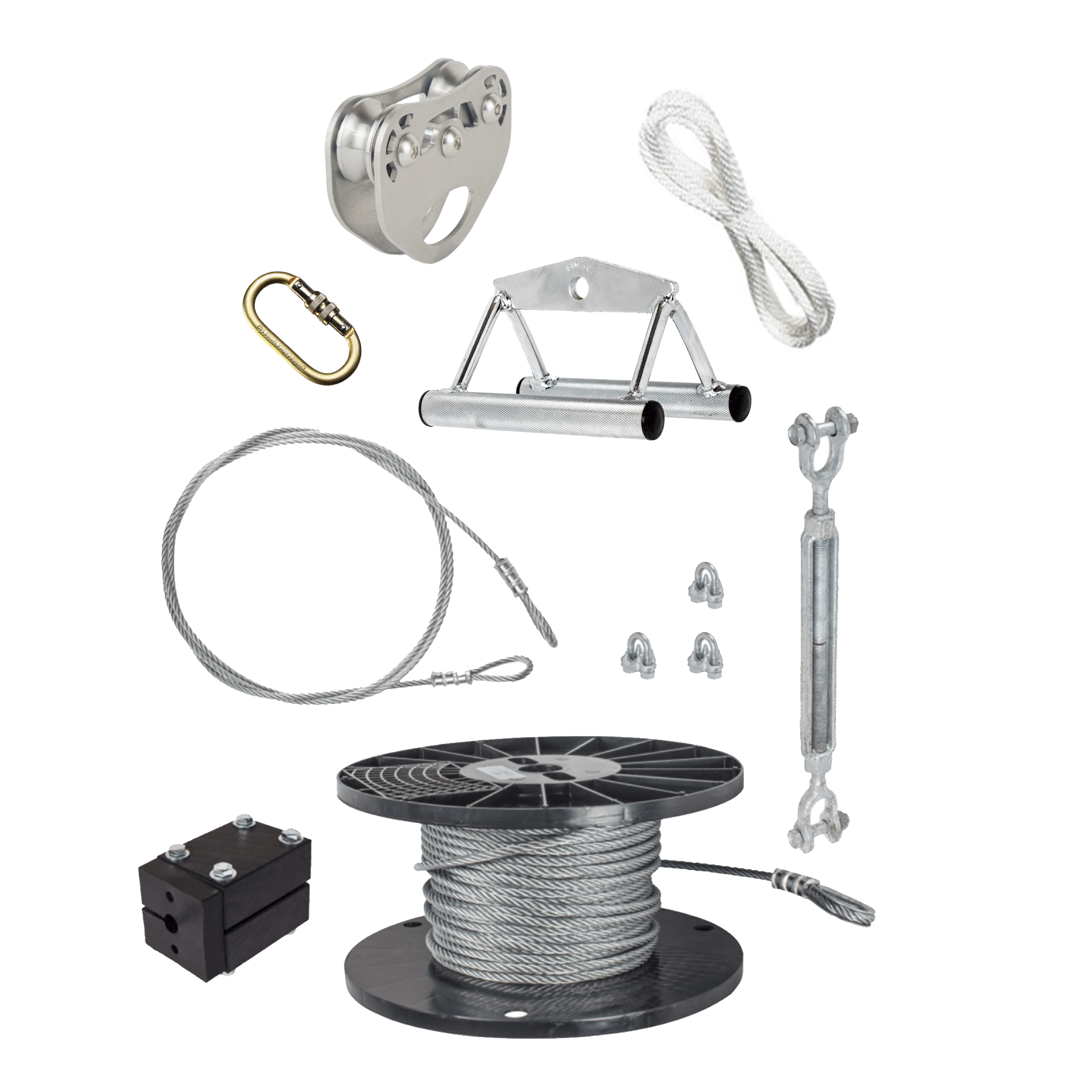Zip Line Trolleys
Today’s trolleys are engineered for a variety uses; tune in to determine which trolley is the best for you.
THE BASICS
A zip line trolley is a device containing two or more pulley wheels that rides on top of a zip line cable and is responsible for safely carrying a rider via Handlebar, Seat, or Harness from one end of a zip line to the other.
Here are some factors that zip line owners consider when buying their trolleys:
•SPEED RATING and ENDURANCE
Trolleys differ by their MPH (miles-per-hour) speed rating. This rating refers to the maximum speed the bearings are capable of handling without overheating or experiencing damage. The speed rating is not an indicator of the actual speed you are likely to see on your zip line. The slope of the ride rather than type of pulley used primarily determines speed.
Reduced friction on the trolley’s axles is achieved by integrated ball-bearings in the wheels. The ball-bearings do not make the wheels spin faster but rather provide a smoother, more stable glide.
SINGLE BALL-BEARING TROLLEYS

Trolleys with single ball-bearing wheels tend to ride faster on average than their dual ball-bearing counterparts of a similar build. However, single bearing trolleys have a low mph rating because they do not handle high speeds as well, and thus have a shorter “life expectancy."
Shop the Petzl Tandem Speed Trolley
DUAL BALL-BEARING TROLLEYS

Dual ball-bearing trolleys are at the high end of the zip line trolley spectrum. Noted for their durability and dependability, dual-bearing trolleys score higher speed ratings.
Shop the Rogue Cable Trolley.
•STRENGTH
MBS stands for "Minimum Breaking Strength," or the minimum amount of weight that would cause the trolley to fail or break. This standard notation is an indicator of the quality of manufacturing, wherein higher MBS ratings are preferred. A trolley will almost never be stressed to the point that it passes the MBS threshold.
Look for trolleys made of durable materials such as aluminum and steel. Trolleys that use plastic for their wheel-housings are considered toys.
•CONNECTIVITY
A trolley that sits freely on top of the cable makes for easy removal. These trolleys naturally flip off the cable when not bearing weight; thus they are secured with a carabiner. An example is the Rogue Cable Trolley, which is great for accessorizing.
TROLLEYS WITH BUILT-IN CARABINER

Petzl, a French manufacturer of climbing equipment, has a zip line trolley with a built-in carabiner. Trolleys like these make clipping onto a zip line a one-handed operation. This requires less hardware.
Shop the Petzl Trac Trolley. Or, shop its dual ball-bearing brother, the Petzl Trac Plus Trolley.
TROLLEYS WITH BUILT-IN HANDLEBARS

Some trolleys come with built-in handlebars. These trolleys are ideal for leaving on the zip line at all times and ought to be locked in place near an anchor, with a Trolley Lock, when not in use. Some trolleys have handlebars built-in, yet are relatively easy to remove from the zip line.
Shop the Chetco Trolley. Or, shop the Robertson Zip Tour trolley
•RETURN
In most cases, the trolley will be returned back to the start anchor with a rope or towed back by holding onto the attached seat. The quick-detach trolleys can be removed at the end anchor after each ride. If you are planning on using multiple trolleys on the same run, or having multiple zip lines while using the same trolley, a quickly detachable trolley would be necessary.
- Choosing a selection results in a full page refresh.
